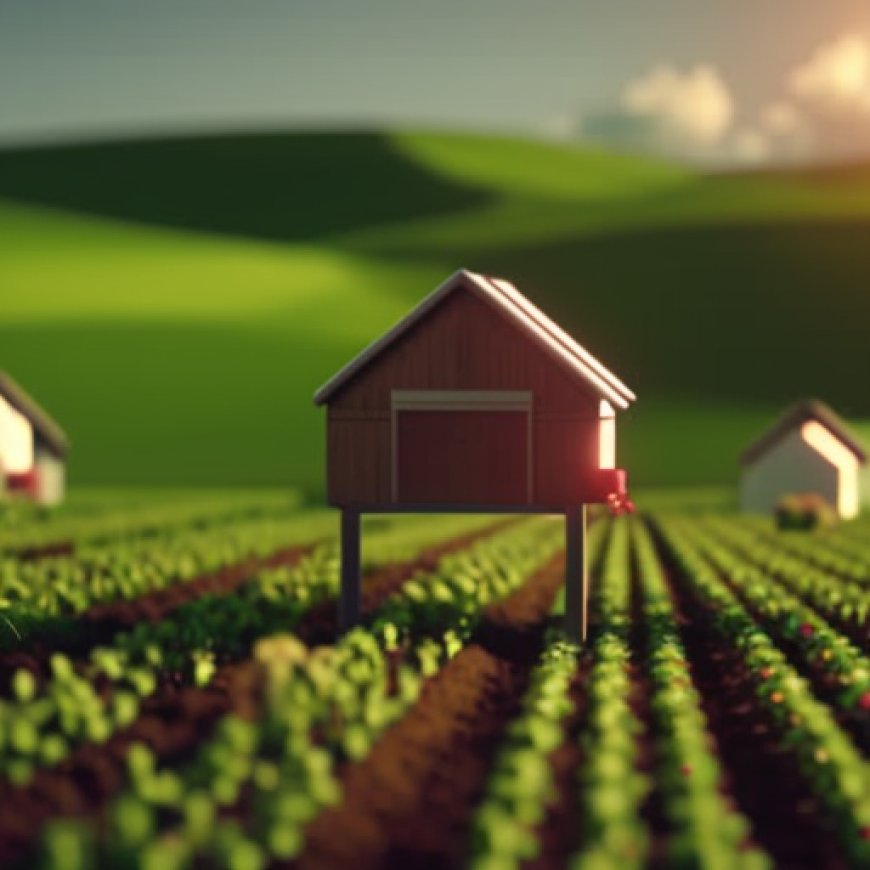Farm Loan Programs can be used for climate-smart agriculture practices
Farm Loan Programs can be used for climate-smart agriculture practices National Hog Farmer


The Role of Farm Loan Programs in Supporting Climate-Smart Agriculture

Introduction
The USDA’s Farm Service Agency (FSA) offers Farm Loan Programs that can be utilized by agricultural producers to support various climate-smart agriculture practices. These practices build upon existing techniques such as cover cropping, nutrient management, and conservation tillage.
The Importance of Sustainable Development Goals (SDGs)
The FSA recognizes the significance of the Sustainable Development Goals (SDGs) in promoting sustainable agriculture. By implementing climate-smart agricultural practices, significant environmental benefits can be achieved, including carbon capture and sequestration, improved water management, and soil health restoration. These practices align with the SDGs and contribute to a more sustainable future.
Funding Opportunities for Climate-Smart Agriculture
Farm Loan Programs offered by the FSA provide financial support to farmers and ranchers who wish to enhance their operations and make a positive impact on the environment. These loans can be utilized to invest in climate-smart practices and equipment, such as rotational grazing systems, precision agriculture equipment, and machinery for no-till residue management. Additionally, these loans can cover the producer’s share of implementation costs for programs like the Conservation Reserve Program and conservation programs offered by the USDA’s Natural Resources Conservation Service.
Examples of Utilizing Farm Loans for Climate-Smart Agriculture
-
Precision agriculture equipment: Eligible producers could use a Term Operating Loan to purchase equipment like GPS globes, monitors, or strip till fertilizer equipment.
-
Cover crops: Eligible producers could use an Annual Operating Loan for seed costs.
-
No/reduced till: Eligible producers could use a Term Operating Loan to purchase equipment.
-
Livestock facility air scrubber or waste treatment: Eligible producers could use a Farm Ownership Loan for capital improvements to livestock facilities.
-
Cross fencing: Eligible producers could use an Annual or Term Operating Loan to purchase fencing and installation equipment.
Benefits of Utilizing Farm Loans for Climate-Smart Agriculture
By leveraging farm loans to invest in climate-smart agriculture practices, farmers and ranchers can not only contribute to environmental sustainability but also experience lower input costs, higher yields, and improved financial outcomes. These loans provide a win-win situation for both producers and our natural resources.
Conclusion
To learn more about how FSA farm loans can support climate-smart agriculture practices, visit the Climate-Smart Agriculture and Forestry webpage.
SDGs, Targets, and Indicators
1. Which SDGs are addressed or connected to the issues highlighted in the article?
- SDG 2: Zero Hunger
- SDG 13: Climate Action
- SDG 15: Life on Land
2. What specific targets under those SDGs can be identified based on the article’s content?
- SDG 2.4: By 2030, ensure sustainable food production systems and implement resilient agricultural practices that increase productivity and production, that help maintain ecosystems, that strengthen capacity for adaptation to climate change, extreme weather, drought, flooding, and other disasters, and that progressively improve land and soil quality.
- SDG 13.2: Integrate climate change measures into national policies, strategies, and planning.
- SDG 15.3: By 2030, combat desertification, restore degraded land and soil, including land affected by desertification, drought, and floods, and strive to achieve a land degradation-neutral world.
3. Are there any indicators mentioned or implied in the article that can be used to measure progress towards the identified targets?
- Indicator for SDG 2.4: Adoption of climate-smart agricultural practices such as cover cropping, nutrient management, conservation tillage, rotational grazing systems, precision agriculture equipment, and machinery for conversion to no-till residue management.
- Indicator for SDG 13.2: Increase in the number of agricultural producers using climate-smart practices and equipment.
- Indicator for SDG 15.3: Improvement in water management, soil health, and carbon capture and sequestration through climate-smart agricultural practices.
Table: SDGs, Targets, and Indicators
| SDGs | Targets | Indicators |
|---|---|---|
| SDG 2: Zero Hunger | 2.4: By 2030, ensure sustainable food production systems and implement resilient agricultural practices that increase productivity and production, that help maintain ecosystems, that strengthen capacity for adaptation to climate change, extreme weather, drought, flooding, and other disasters, and that progressively improve land and soil quality. | Adoption of climate-smart agricultural practices such as cover cropping, nutrient management, conservation tillage, rotational grazing systems, precision agriculture equipment, and machinery for conversion to no-till residue management. |
| SDG 13: Climate Action | 13.2: Integrate climate change measures into national policies, strategies, and planning. | Increase in the number of agricultural producers using climate-smart practices and equipment. |
| SDG 15: Life on Land | 15.3: By 2030, combat desertification, restore degraded land and soil, including land affected by desertification, drought, and floods, and strive to achieve a land degradation-neutral world. | Improvement in water management, soil health, and carbon capture and sequestration through climate-smart agricultural practices. |
Copyright: Dive into this article, curated with care by SDG Investors Inc. Our advanced AI technology searches through vast amounts of data to spotlight how we are all moving forward with the Sustainable Development Goals. While we own the rights to this content, we invite you to share it to help spread knowledge and spark action on the SDGs.
Fuente: nationalhogfarmer.com

Join us, as fellow seekers of change, on a transformative journey at https://sdgtalks.ai/welcome, where you can become a member and actively contribute to shaping a brighter future.







